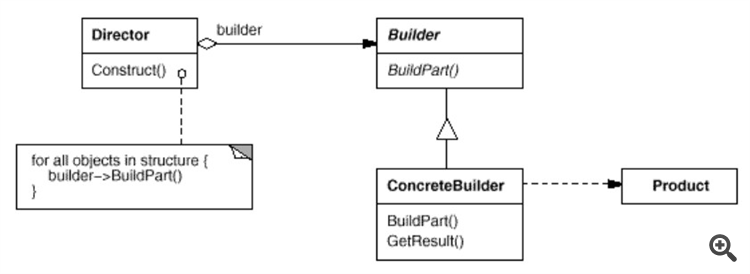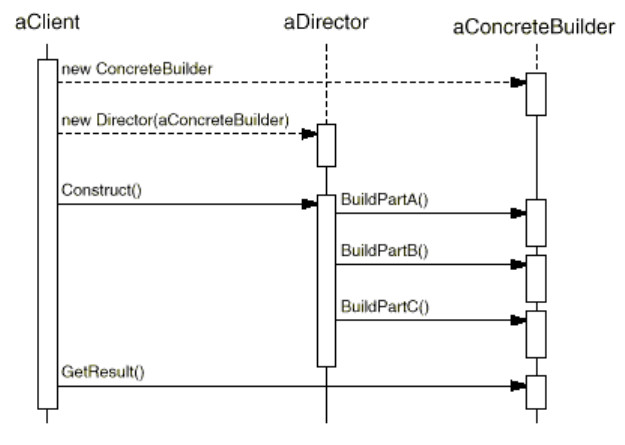

/********************************************************************* MQL5 Script Copyright 2019, dmipec 792112@gmail.com Classic Builder Programming Pattern This pattern was published in the "Design Patterns: Elements of Reusable Object-Oriented Software", 1st Edition, by Erich Gamma (Author), Richard Helm (Author), Ralph Johnson (Author), John Vlissides (Author), Grady Booch (Foreword). These authors are collectively known as Gang of Four (GoF). Structure is shown on the diagram Intent Separate the construction of a complex object from its representation so that the same construction process can create different representations. Applicability * the algorithm for creating a complex object should be independent of the parts that make up the object and how they're assembled. * the construction process must allow different representations for the object that's constructed. Participants Builder * specifies an interface for creating parts of a Product object. Concrete Builder * constructs and assembles parts of the product by implementing the Builder interface. * defines and keeps track of the representation it creates. * provides an interface for retrieving the product. Director * constructs an object using the Builder interface; Product * represents the complex object under construction. Concrete Builder builds the product's internal representation and defines the process by which it's assembled. * includes classes that define the constituent parts, including interfaces for assembling the parts into the final result. Collaborations (see diagram) * The client creates the Director object and configures it with the desired Builder object. Director notifies the builder whenever a part of the product should be built. * Builder handles requests from the director and adds parts to the product. * The client retrieves the product from the builder. Consequences It lets you vary a product's internal representation. The Builder object provides the director with an abstract interface for constructing the product. The interface lets the builder hide the representation and internal structure of the product. It also hides how the product gets assembled. Because the product is constructed through an abstract interface, all you have to do to change the product's internal representation is define a new kind of builder. It isolates code for construction and representation. The Builder pattern improves modularity by encapsulating the way a complex object is constructed and represented. Clients needn't know anything about the classes that define the product's internal structure; such classes don't appear in Builder's interface. Each Builder contains all the code to create and assemble a particular kind of product. The code is written once; then different Directors can reuse it to build Product variants from the same set of parts. It gives you finer control over the construction process. Unlike creational patterns that construct products in one shot, the Builder pattern constructs the product step by step under the director's control. Only when the product is finished does the director retrieve it from the builder. Hence the Builder interface reflects the process of constructing the product more than other creational patterns. This gives you finer control over the construction process and consequently the internal structure of the resulting product. Implementation * Typically there's an abstract Builder class that defines an operation for each component that a director may ask it to create. The operations do nothing by default. A ConcreteBuilder class overrides operations for components it's interested in creating. * Here are other implementation issues to consider: Assembly and construction interface. Builders construct their products in step-by-step fashion. Therefore the Builder class interface must be general enough to allow the construction of products for all kinds of concrete builders. A key design issue concerns the model for the construction and assembly process. A model where the results of construction requests are simply appended to the product is usually sufficient. But sometimes you might need access to parts of the product constructed earlier. In that case, the builder would return child nodes to the director, which then would pass them back to the builder to build the parent nodes. Why no abstract class for products? In the common case, the products produced by the concrete builders differ so greatly in their representation that there is little to gain from giving different products a common parent class. Because the client usually configures the director with the proper concrete builder, the client is in a position to know which concrete subclass of Builder is in use and can handle its products accordingly. Empty methods as default in Builder. In C++, the build methods are intentionally not declared pure virtual member functions. They're defined as empty methods instead, letting clients override only the operations they're interested in. Code output Construction in progress... Part A built Part B built Part C built Delivering finished 'Real Product' This 'Real Product' is made of: Part A Part B Part C */ 














